The need for new energy sources increases as a result of the increase in the world’s population, and renewable energy is prioritized for its advantages which makes it the ideal option. Research and studies conducted by research centers around the world have demonstrated the increasing use of renewable energy from its various sources, and the need to give this subject due consideration, as in the EMBER report.
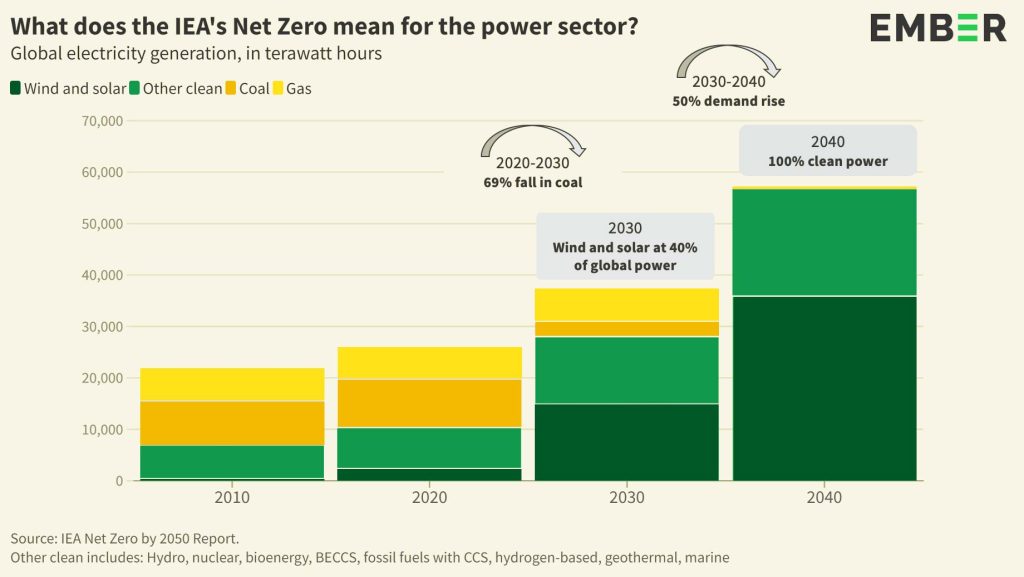
In this article, we will discuss all the questions you might have about renewable energy, and you will learn about its types, advantages, and disadvantages. In addition, we have collected the most popular websites and books to keep you abreast in this area.
What is renewable energy?
Definition of renewable energy
Penn State College of Agricultural Sciences defined renewable energy as energy generated from natural sources that are continuously replenishing and inexhaustible such as sunlight, wind and tides, and have different forms with unclear environmental impacts, as opposed to alternative energy which refers to alternative energy for organic fossil fuels that has a harmless impact on the environment.
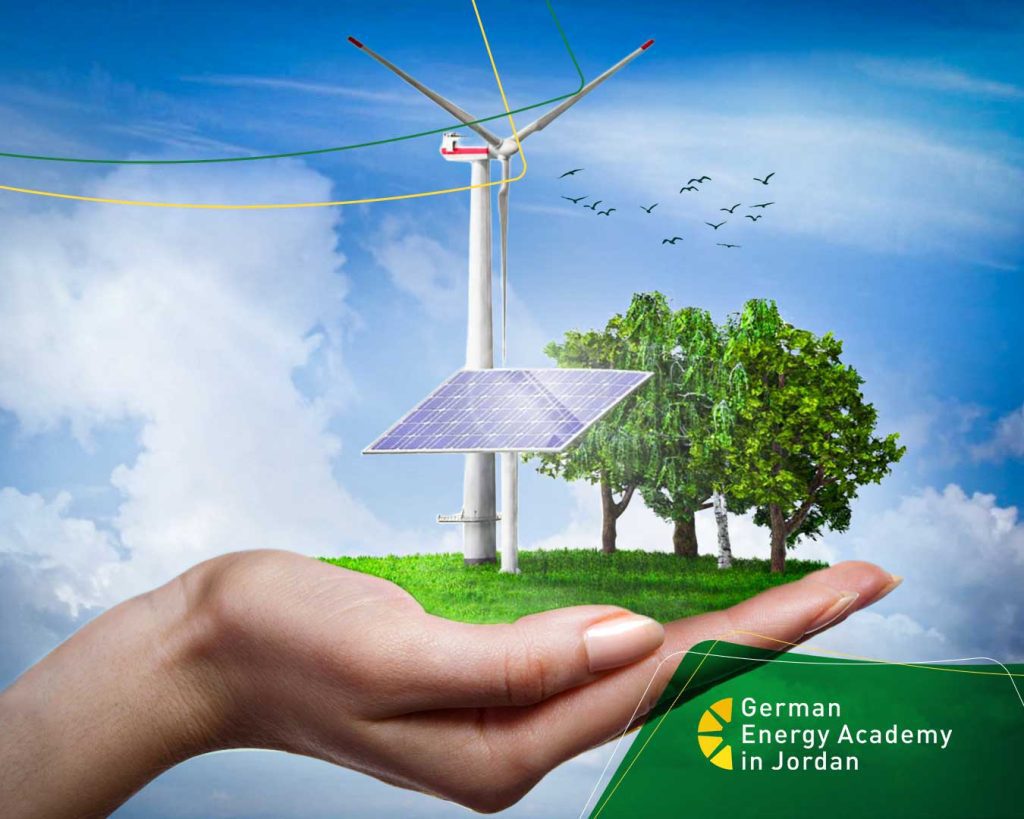

What is the difference between renewable and non-renewable energy?
Renewable green energy and its multiple sources are vital as non-renewable energy such as coal or petroleum is difficult to be replaced immediately after depletion. For the sake of simplicity, we gathered the main differences between renewable and non-renewable energy in the following table:
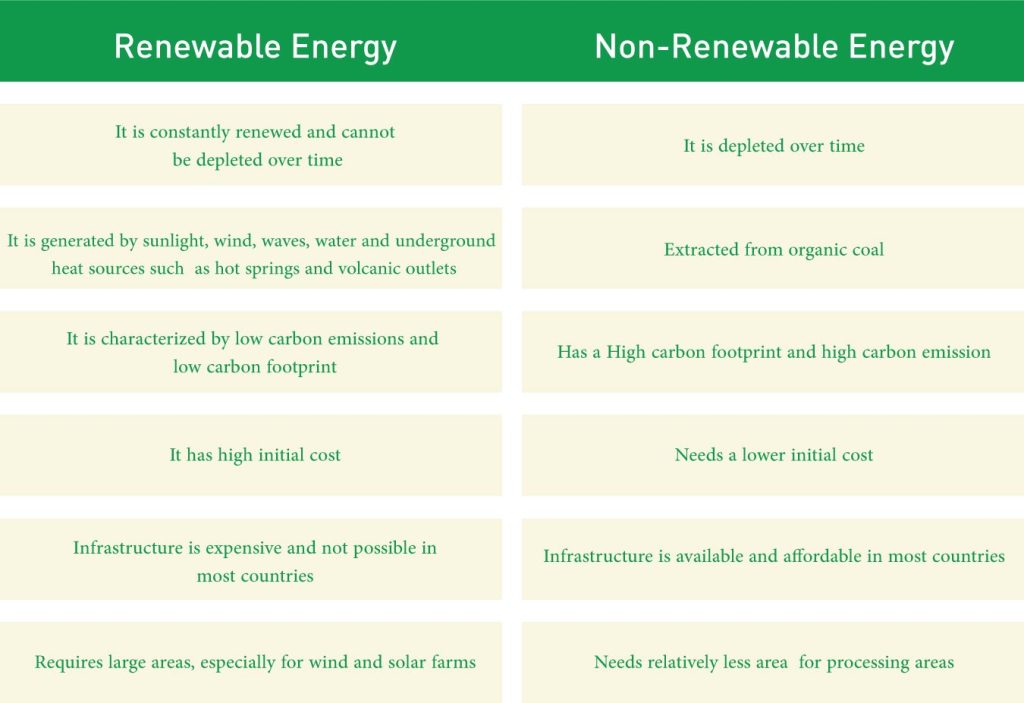

What is the difference between renewable energy and sustainable energy?
Both terms are used interchangeably even among experts, but in fact there are some differences between them.
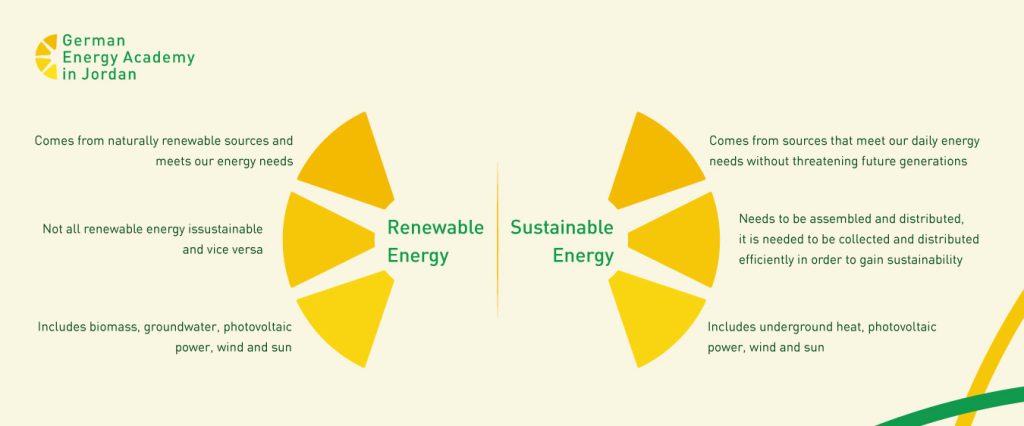

History of Renewable Energy
People’s need for energy is an old one that has often been met by non-renewable sources such as coal and natural gas. And because these sources are finite, considering permanent sources have become a need and an urgent necessity as populations increase around the world, particularly after the discovery of a direct correlation between the use of energy from non-renewable sources and the deterioration of living standards and health; For example, many asthma cases are a result of pollution from power plants.
As a result, countries, notably the United States, recognized the need for diversification of energy sources, and for obtaining energy from different sources such as renewable energy, in particular.
A closer look at the history of the emergence of renewable energy reveals variation in humanity’s knowledge of different sources of such energy. This paragraph will discuss the most common of these sources:
- Solar energy: Solar energy was discovered by William Robert Grove -the inventor of hydrogen fuel cells- in 1839; These cells were practically applied as a source of energy only 100 years later during which this new technology has evolved. The first solar power plant was built in California in 1981, with 8,018 mirrors used to reflect sunlight.
- Hydropower: The Europeans were the first to use water in power generation in 200 B.C., using it to control wheat mills, and its use evolved several centuries later to generate electricity, with the first hydroelectric plant being built in Appleton, Wisconsin in 1882.
- Wind power: Windmills were used to grind grain for the first time in the First Persian Empire and then used by the Dutch to pump water and reduce floods. Today, the world’s largest wind farm is in California, after beginning wind farm construction in 1981 in response to the energy crisis in 1970.
- Biomass: Did you know that the alcohol we drink today was used to power engines in 1826? In 1940, the first ethanol station was built in the United States; Most ethanol is made from corn fermentation. Its production evolved during The Great Depression of 1929-1939; This has had a positive impact on farmers in terms of corn production and high price. In 2007, the US Government passed the Energy Independence and Security Act, which led to a boom and recovery in ethanol production and consumption.
What are the main sources of renewable energy?
Renewable energy sources vary, most notable of which are:
- Sun: The sun is one of the most abundant sources of energy. The amount of solar energy that reaches Earth’s surface per hour exceeds the planet’s need for energy for an entire year. Although it is one of the best renewable sources of energy, the amount of energy we can harness varies depending on the time of day, season, and geographical location.
- Wind: Wind is an abundant source of renewable clean energy. Wind farms are widely spread in the United Kingdom that generates energy from wind, and contribute effectively to the national electricity grid.
- Tides: It is a form of hydropower that employs tidal currents in power generation. And although it is not consistently available as other sources of hydropower, it is easy to predict, thus making it possible to compensate for it efficiently.
- Geothermal energy: Thermal energy from Earth’s crust is used to generate energy that is used to heat homes directly, to produce electricity or fuel for transportation..
- Biomass energy: Means converting solid fuels made from plant materials and residues into electricity; biomass involves burning organic materials to generate electricity, and this process has become more efficient and is done in a clean way in our current time. Biomass contributes to energy supply in an economic and environmentally-friendly manner by converting plant, industrial, and local waste into solid and liquid fuel., to supply energy
Types of renewable energy
- Solar energy: This energy is used to generate electrical power by mechanical engines or photovoltaic transformers. Solar energy is also converted into other forms used for different purposes: distilling water, industrial purposes, or local purposes such as cooking. The Ivanpah Solar Plant in California is considered one of the most important projects.
- Wind energy: This energy is used to move things, and then convert it into different forms of energy such as electric energy using turbines. This energy is considered safe and entirely environment-friendly as it does not emit any environmental pollutants, and it has the advantage of being less expensive compared to other sources of renewable energy.
The UAE contributes to various projects internationally and across Arab countries to generate electricity from wind energy. (see here). For the world’s 10 largest wind farms click here - Hydropower: This energy is one of the energies most contributing to economic development, resulting from constructing dams or barriers to storing the water behind, then controlling the amount of water used to power turbines for generating electricity.
This source is more commonly used than solar or wind energy as it allows storing energy for use during high demand. In some cases, hydroelectricity is a good economic option and can be used to generate electricity for domestic and local purposes.
The kinetic energy of running water is used to rotate turbines that are connected to generators rotating with turbines in a magnetic field that generates electricity. For Top 10 Hydroelectric Projects see here. - Bioenergy: Is the collection of gases emitted by the combustion of all types of plant, animal, and household waste; These gases, including methane, are collected and then used to operate power plants later.
- Geothermal energy: Is the heat energy of Earth’s crust, and it is used to heat water, which is then used to rotate turbines that generate electric power, or for domestic heating in cold areas such as Iceland, which is the most prominent country that uses this type of energy.
This energy is considered one of the most sustainable types of renewable energies because of its constant availability and year-round abundance. You can see the 10 largest sources of geothermal energy here.
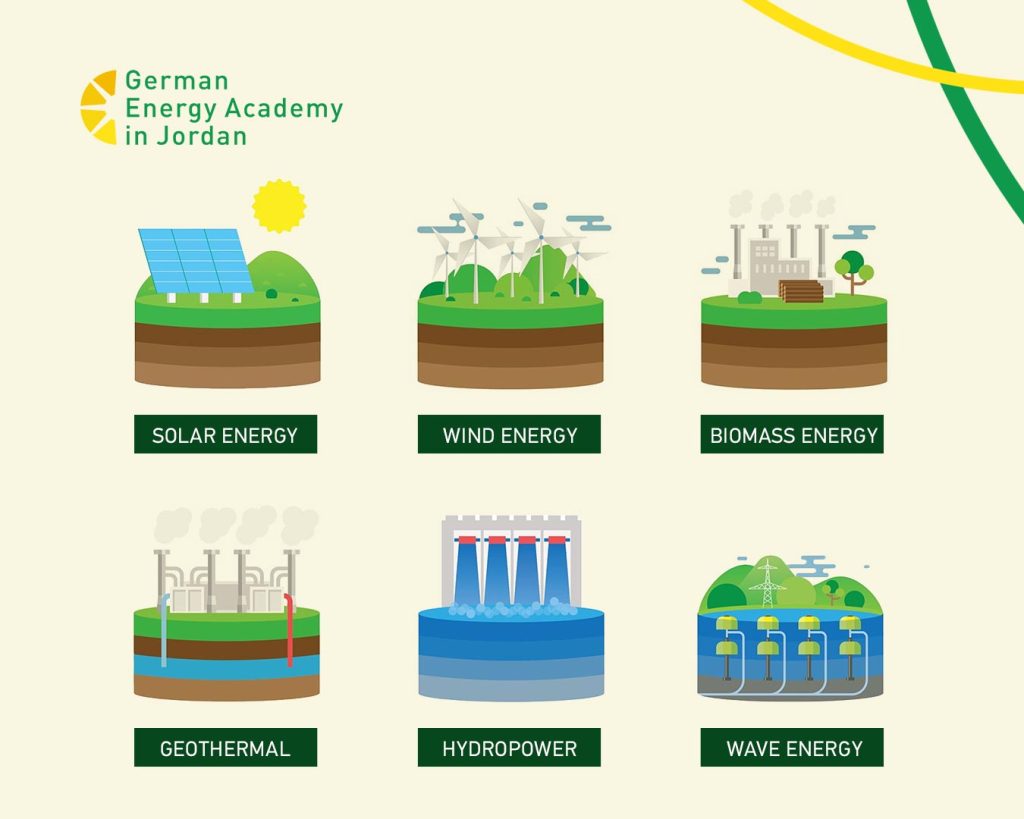

Renewable Energy Uses and Solutions
Clean green energy has been used for various purposes since antiquity; wind energy has been used in grinding grain, Wind energy in propelling boats in the sea, and solar energy for setting fire and cooking purposes. However, over time these uses have begun to be more organized in different areas.
In industry
Solar and wind energy are prominent among other types of renewable energy; thermal energy derived from the Sun’s energy is used in heat-based industries such as paper manufacturing, mineral processing, and food production. Also, the trend is growing to generate electricity from the Sun’s energy in order to supply it to homes and factories.
On the other hand, electricity is also generated from wind energy, and has been used in the industry of spices, cocoa, paints, and dyes; this use contributed to reducing pollution from factories and helped to control fossil fuel use.
In agriculture
Alternative energy provides an excellent eco-friendly solution for farmers. Instead of using fossil fuel-based sources, green energy sources provide an alternative to expensive diesel generators in watering and irrigation through the use of solar-powered irrigation systems, pumping water from wells, and grinding grain by using wind energy.
In energy field
The demand for energy generation using renewable sources has recently increased, with growing difficulty in electricity generation from non-renewable sources and the increased competition among counties for access to it. Electricity is now generated from wind and solar energy, and by leveraging tidal energy through the conversion of kinetic energy into electric energy.
In transport
Renewable energy in mobility is mostly employed in using the electricity generated from solar and wind energy in operating vehicles such as cars and trains running on electricity rather than gasoline. This clean electricity has been one of the key solutions to limiting carbon emissions and air pollution.
everyday life
Governments seek to introduce green energy into everyday life by supplying homes with electricity generated by solar or wind energy.
Pros and cons of renewable energy
Pros of Renewable Energy
- Does not deplete.
- Safe
- Improves public health
- Creates Job opportunities
- Lower maintenance costs
- Reduces fluctuations in energy prices
- Increases counties’ economic independence
- Residue from its sources can be recycled
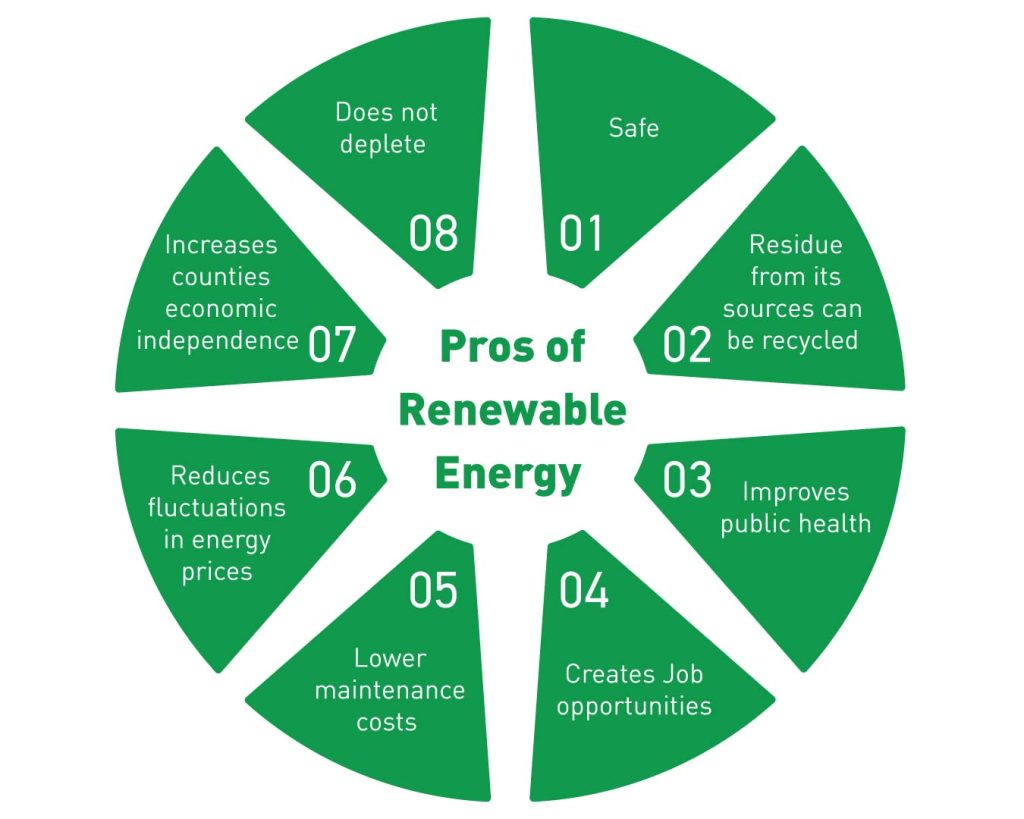

Cons of Renewable Energy
- Not available around the clock
- Its technologies have low efficiency
- High initial cost
- Requires large areas For sites
- The equipment used is not always recyclable
- Not completely eco-friendly.
- Requires storing
- Influenced by geographical factors
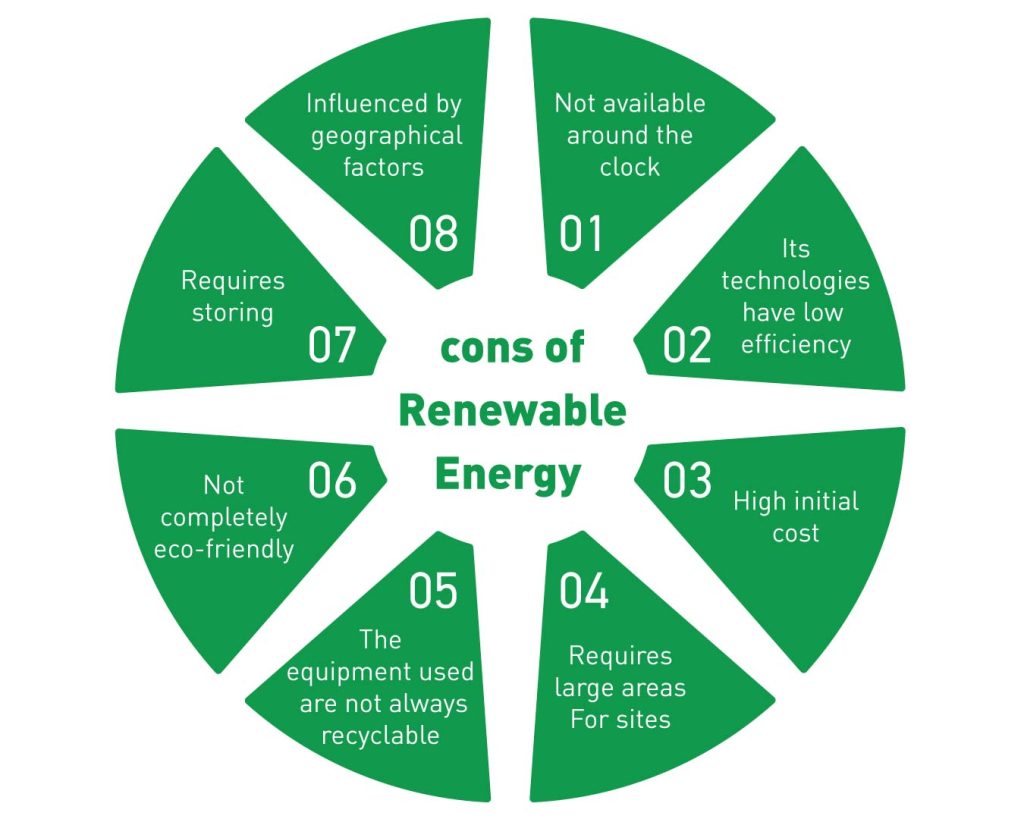

Frequently asked questions about renewable energies
Can renewable energy be stored?
Energy storage is the retention of produced energy for later use by using a storage device called a storage cell or a battery… Can renewable energy be stored? The challenge is not only to produce more energy from renewable sources but also to store and retain it for use at the time of need.
One such solution was The Ocean Battery developed by Ocean Grazer; the system consists of large pockets installed on the ocean floor and filled with water by a wind turbine, when electricity is needed, the water is pumped through the ocean pressure passing through the turbine generating electricity. Another solution is Energy Volt’s 60 meter energy storage battery.
Books on renewable energy
English books on Renewable Energy
- Sustainable Energy Transformation, Power and Politics
This book presents the transformations in energy from the past to the present, highlighting the challenges and opportunities facing building the sustainable energy system in the light of the fundamental problems facing countries such as global warming, pollution, the high cost of producing energy resources and others. The link
- Sustainable Energy Systems Planning, Integration, and Management
Academic research study on renewable energies. English study link
- Renewable Energy: Physics, Engineering, Environmental Impacts, Economics And Planning 4the Edition
- Energy Systems and Sustainability
- Integration of Renewable Energy Sources into the Power Grid Through PowerFactory
Arabic Books on Renewable Energy
- Renewable Energy by Marwan Abdelkader Ahmed
This book discusses the concept of energy and its sources and challenges, and the problems resulting from its depletion and the emergence of the need to seek alternative sources, primarily renewable energy. The book also discusses the best strategies that can be followed for the optimal use of this energy. Site Link
- Alternative energy: sources and uses
Scientists have become certain that fossil fuel sources will be depleted sooner or later, prompting scientists and researchers to find lasting alternatives. The book discusses diverse renewable energy sources, and the future of the world’s energy. Download Link
- Biomass treasures – renewable energy and inexhaustible wealth.
A book on natural resources in which the author discusses renewable energy sources and mentions their respective types, discussing biomass sources and their uses with examples, as well as presents practical applications in all Arab and other countries. Site Link
Top Renewable Energy Sites
- IRENA: (International Renewable Energy Agency): An intergovernmental organisation that supports countries in their transition to alternative energy. Site Link
- Penn State Extension – The Pennsylvania State University
College of Agricultural Sciences at the Pennsylvania State University teaches courses in agriculture and renewable energy. link here
In conclusion, renewable energy emerges with its multiple sources and types as the alternative and optimal solution for the challenges faced by counties on population density, damage to the environment, and other matters. In order to maximize its utilization, it is imperative that studies and research be carried out, and that the subject is read in greater detail after the basic information provided to you in this article on renewable energy.
